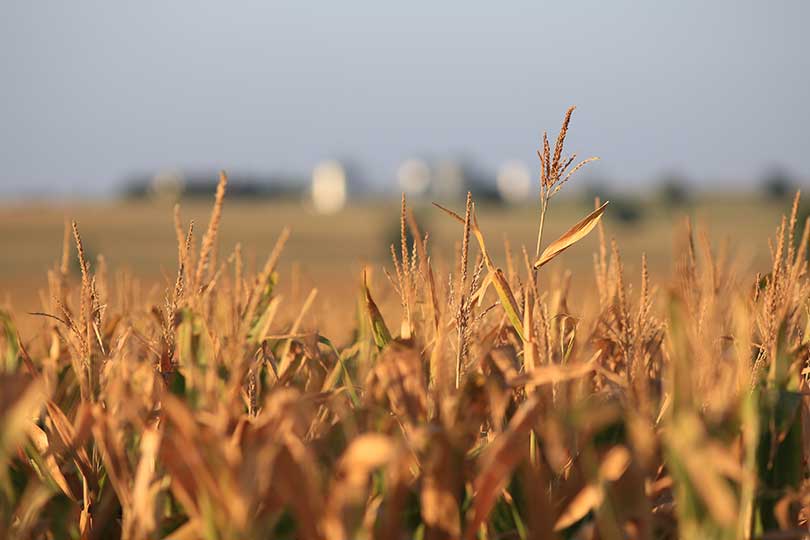By Julie Tomascik
Editor
Net farm income is forecast to continue falling, painting a grim picture for American agriculture.
The most recent Farm Sector Income Forecast from the U.S. Department of Agriculture (USDA) shows net farm income expectations at $140 billion, a 23% decline since 2022.
“The drop in net farm income is not just an economic hiccup. It’s evidence of an agricultural downturn,” American Farm Bureau Federation (AFBF) President Zippy Duvall said.
The drop comes amid increased labor expenses and taxes, falling commodity prices and reduced government support. A stronger-than-expected performance in the livestock sector, however, did offset the steep declines in cash receipts for grain farmers.
By the numbers
Net cash farm income, which is gross cash income minus cash expenses, is forecast to decline 7.2% from last year to $154 billion.
Adjusting for inflation, the net farm income forecast is down 6.8% from 2023, while the net cash farm income forecast is down 9.6%.
Crop sector
Cash receipts from crop sales are expected to suffer a significant blow this year. A year-over-year decline of 10% is forecast.
Corn receipts are expected to drop by $16 billion, or 20%, largely driven by price declines that will more than offset the increase in quantities sold.
Soybean receipts are also expected to decline, falling by $8.6 billion, or 14.6%.
Cotton is expected to fall by $1.7 billion, or 23.6%, and wheat is projected down $1.6 billion, or 12.3%.
The anticipated drop in receipts for grains and oilseeds is mainly a result of a global surplus and weaker market prices.
Vegetable and melon receipts, however, are expected to increase by $2.5 billion, or 9.7%.
Rice is also forecast up $250 million, or 7%.
Livestock sector
Stronger prices for cattle, dairy and eggs help present a more optimistic outlook for the livestock sector, with receipts expected to rise by $17.8 billion this year.
Egg receipts are expected to increase by 38.7%, reflecting robust price gains linked to the impacts of highly pathogenic avian influenza.
Receipts are expected to grow 6.5%, or $6.6 billion, for cattle and calves due to higher prices.
The dairy sector is also expected to see a rebound from last year with milk receipts up 9.4% or $4.3 billion.
But not all sectors are seeing increases.
Turkey farmers are expected to experience a severe downturn, and hog producers are forecast to see only modest growth.
Production expenses
There are some improvements in production expenses, but costs still remain high.
Declines are expected in feed, fertilizer and fuel expenses. Feed costs are forecast to drop by $9.8 billion, fertilizer by $3.5 billion and fuel by $1.7 billion.
Despite those declines, an increase in labor and interest costs will leave farmers facing a tight financial situation.
Labor costs are forecast to increase by $3.4 billion, or 6.9%, and interest expenses are expected to rise by $1.8 billion, or 6.3%.
Government payments
Direct government payments are projected to decrease by $1.8 billion, or 15.1%, to $10.4 billion this year.
This reduction marks the fourth consecutive year of declining government support, reflecting the winding down of pandemic-era programs and the outdated nature of safety net programs like Agriculture Risk Coverage and Price Loss Coverage, according to AFBF economists.
A new farm bill is needed
“Farmers and ranchers are facing inflation just like every other American family, but we’ve also got a great deal of severe weather around, plummeting crop prices and constant changes in regulatory requirements. Our labor, interest expense and property taxes are at a record level,” Duvall said. “On top of all that, our farm safety net that was designed to help our farms manage risk is so outdated that in many cases, it won’t even trigger to help family farms face the drop in income.”
AFBF and Texas Farm Bureau, along with other food and agricultural organizations, have called on Congress to act on passing a new farm bill.
“It has been two years of kicking the can down the road when it comes to the farm bill, and there is no road left for some farmers in light of the current economic realities and antiquated safety net programs,” he said. “Congress is failing America’s families, not just on the farm, but in every home that relies on the safe, affordable food grown by the men and women who work year-round to provide it.”
Economic reports
The September report was one of three farm income reports released by USDA. The first was released in February, and the final report will be released in December.


Leave A Comment